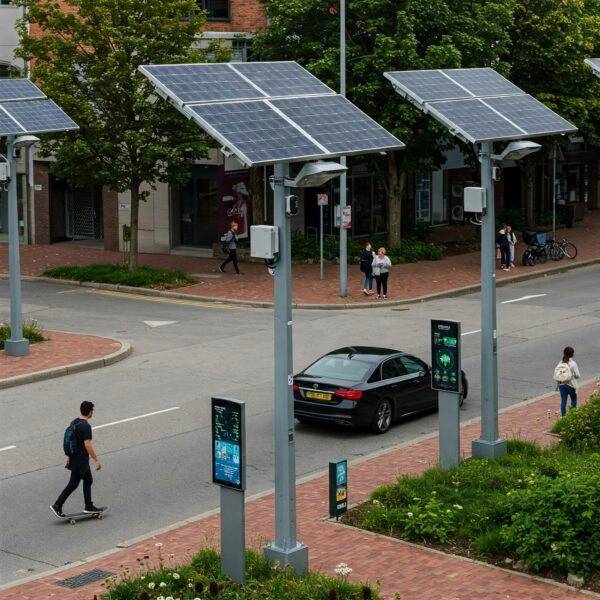Designing a solar street lighting system that is both affordable and environmentally friendly requires a strategic approach. This article explores key considerations and practical tips for achieving a low-cost, high-efficiency lighting solution without compromising on sustainability.
1. Optimizing Solar Panel and Battery Selection
Selecting the right solar panel and battery is crucial for reducing upfront costs and ensuring long-term reliability. Monocrystalline panels, although slightly more expensive, offer higher efficiency and durability. Pairing these with lithium-ion batteries provides a longer lifecycle and lower maintenance costs compared to traditional lead-acid options.
2. Utilizing Energy-Efficient LED Fixtures
LED lights are a cornerstone of any solar street lighting system. They consume significantly less energy than traditional lighting technologies, reducing the size of the solar panels and batteries needed. Additionally, LEDs have a longer lifespan, further minimizing maintenance expenses.
3. Smart Lighting Control Systems
Incorporating motion sensors and adaptive lighting controls ensures energy is used only when needed. Dimming or turning off lights during low-traffic hours conserves power and extends the battery life, contributing to both cost savings and environmental benefits.
4. Modular and Scalable Design
A modular design approach allows for easy scalability and maintenance. Communities can start with a small number of lights and expand the system as needed. This reduces initial investment costs and facilitates future upgrades with minimal disruption.
5. Material Selection and Sustainable Practices
Using recycled materials for poles and fixtures further enhances the eco-friendliness of the system. Additionally, selecting local suppliers reduces transportation emissions and supports the regional economy.
6. Cost-Benefit Analysis and ROI
Performing a detailed cost-benefit analysis helps stakeholders understand the financial and environmental returns. While the initial investment for solar street lights may be higher than conventional systems, the savings on energy bills and maintenance costs often lead to a positive ROI within a few years.
Conclusion
Designing a cost-effective and environmentally friendly solar street lighting system is achievable through strategic component selection, smart technologies, and sustainable materials. By making informed decisions, municipalities and businesses can enjoy reliable, low-maintenance lighting while contributing to a greener planet. Investing in solar street lights is not just a choice for affordability but a commitment to sustainable urban development.




